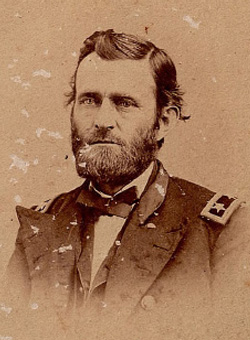
Please send all Checks and Money orders to :
Dave Taylor P.O. Box 87 Sylvania, OH 43560
419-842-1863
Click Here to E-mail Us!
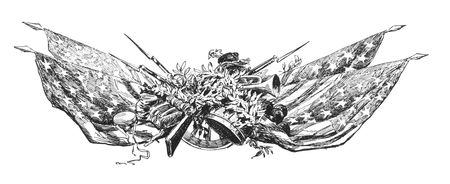
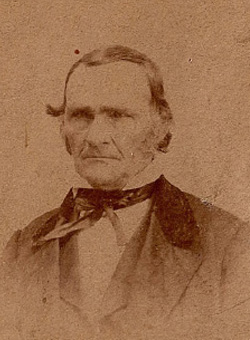
15 05 third list
LAYAWAYS ARE WELCOME:
Need to split your order into multiple payments? No problem! A simple 20% earnest money deposit will hold your item for you.
You can then pay it off in easy installments that fit your budget.
Read Terms Here
~~~~~~~~~~

15-05-101 … Inscribed 9th Indiana Battery Smith & Wesson No. 2 …
Nicely identified S&W no. 2 carried by John W. Carty of the 9th Indiana Battery, a very active artillery unit that ranged widely in the western theatre. The 9th Indiana Battery organized and mustered in at Indianapolis in late 1861 and left the state in late January, 1862. They were a very active battery, serving in a large number of expeditions and pursuits in the western theatre as part of the 13th, 17th and 16th Army Corps and as a detachment to the Army of the Cumberland. In the Spring of 1862, as part of Lew Wallace’s division, they were in action on the second day at Shiloh, firing 1,150 rounds and losing one killed and five wounded. It served under Grant until ordered to Missouri against Marmaduke’s forces and was then engaged against Roddy’s troops and eventually back in Tennessee with Smith’s Division pursuing Forrest. As part of the 16th Corps it took part in the Meridian Expedition and the Red River Expedition. At Pleasant Hill it was credited with the capture of two enemy guns, and took part in skirmishes at Cloutierville, Cane River, Cotile Landing and Bayou Boeuf. It was also engaged in pursuing both Forrest and Price before moving to Nashville in late 1864 and taking part in the pursuit of Hood as well. They lost six men killed and mortally wounded at Shiloh and fights at Canton, Mississippi, Yellow Bayou Louisiana. Ironically, their greatest loss was in January, 1865, at Paducah, KY. About 70 of the battery were on board a troop transport that blew up, killing or mortally wounding about 30 of the men. The butt of Carty’s revolver has two inscribed semicircular silver panels laid in. One is inscribed “9th Ind. Bat.” The other has the script initials “J.W.C.” The only soldier in the battery with those initials is John W. Carty, who enlisted on 2/25/62 and mustered in the same day as a private. He served with the battery until muster out on 2/25/65. Carty also laid in a brass crescent moon on the left side of the grips, along with three small silver hearts. One crescent inlay is missing. The gun is well worn but not unattractive. Clear barrel markings and serial number 13588. Some chipping to the heel of the butt on one side. I bought this at auction in southern Ohio. When I got it the top hinge was completely broken. New Boston Lee … one of the shop helpers here, fashioned a cosmetic repair using J.B. Weld but this is strictly cosmetic. The hinge should not be tested or stressed, and the revolver displays great as it sits. Good early serial number 13,588. A scarce example of an identified western theater artilleryman’s personal sidearm from a unit that saw a lot of campaigning and battle casualties … nocode
… $1,395.00 – SOLD
Click Here to E-mail Us!
Call us @ 419-842-1863
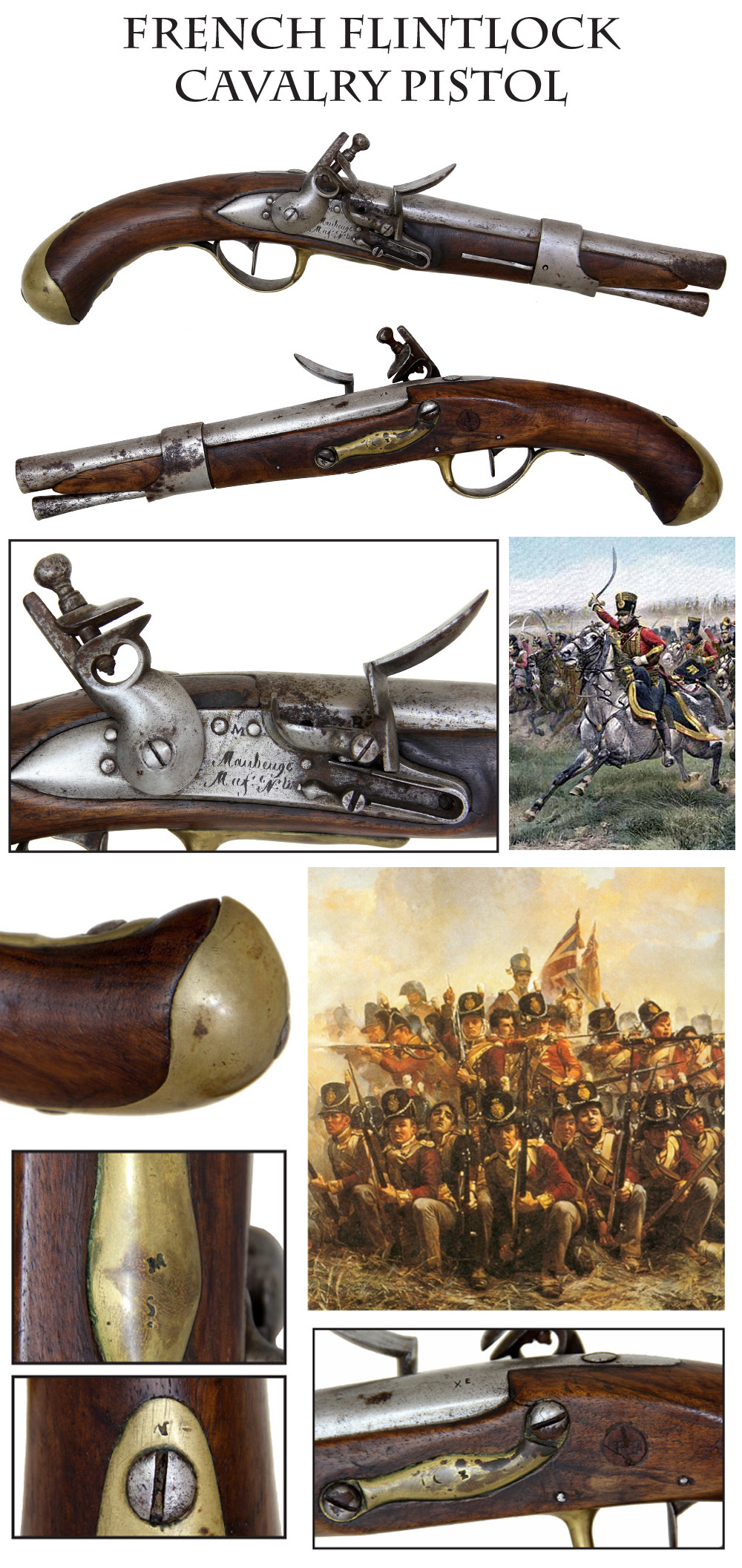
15-05-102 … French Flintlock Cavalry Pistol …
Marked on the lockplate “Mauberge / Manuf. Natl.” this pistol is in original flint and is something of an enigma. Undated, my best guess is that this is a French Revolution era pistol produced when the 1763 patterns were reintroduced because of dissatisfaction with the 1777 patterns. The reintroduced guns were made with iron mounts rather than brass. On the other hand… The single barrel band, might suggest it was updated sometime around the introduction of the AN XIII pattern, developed in 1805 and produced starting in 1806. In this case the stock was left in its original length rather than being shortened to the band. In any case, this is a good pre-Napoleonic cavalry pistol that would have seen service in the Revolutionary Wars of France and well into the early Napoleonic period. Nice smooth dull silver barrel, lock, band, rammer and rod. Just some scattered age browning patches. Brass triggerguard, buttplate and sideplate with a mellow aged patina and some dark spots. Wood very good with clear inspector cartouche on the offside and tight fit to the metal. Various arsenal and inspector initials- “M” in several places, small “E”, etc. A nice variation of a regulation French cavalry arm. Where else can you find a genuine Battle of Waterloo era gun in original flintlock configuration for .. ejjm
… $950.00 – SOLD
Click Here to E-mail Us!
Call us @ 419-842-1863
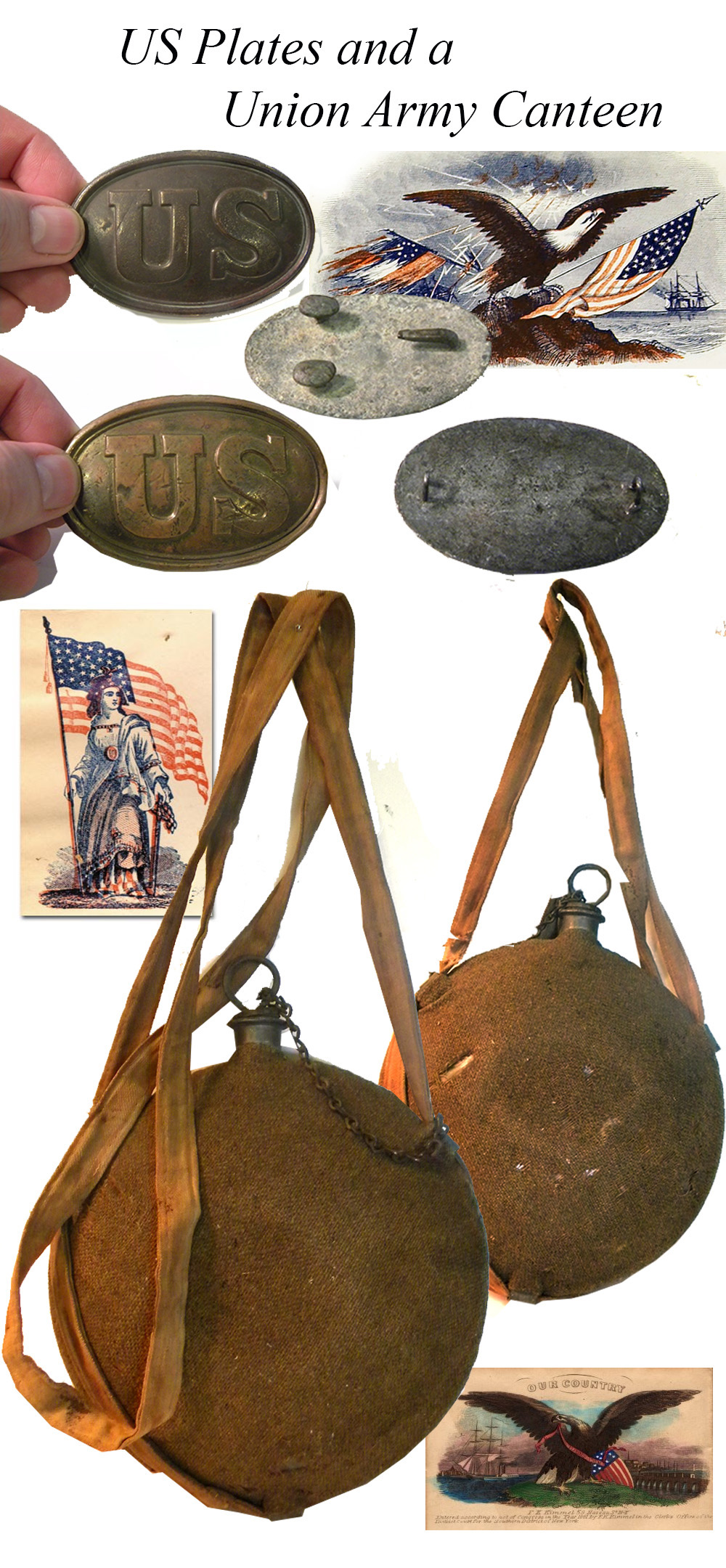
15-05-103 … Perfect Condition Dug “STUD-BACK” US Oval Waist Belt Plate: …
Absolutely perfect early war US infantry buckle with the oval studs and heavy prong on the back. This one if from the Steve Sullivan collection but unfortunately there was no note where it was found. Super example.
$345.00
15-05-104 … Non-Dug US Cartridge Box Plate:
Another top notch plate. This one excellent, just as it was brought home by Billy Yank. Both loops solid.
$199.00
15-05-105 … Complete Union Army Canteen:
Absolutely stellar example of the regulation Union Army Model 1858 canteen. Complete with the full brown wool cover, stopper w/ attaching chain, and the full length folded and sewn twill shoulder strap. One side of the cover is about perfect, the other has a couple small holes. Strap is lightly stained and shows light wear. Once common, now nearly impossible to find in this condition. A top shelf example
… $465.00 – SOLD
Click Here to E-mail Us!
Call us @ 419-842-1863
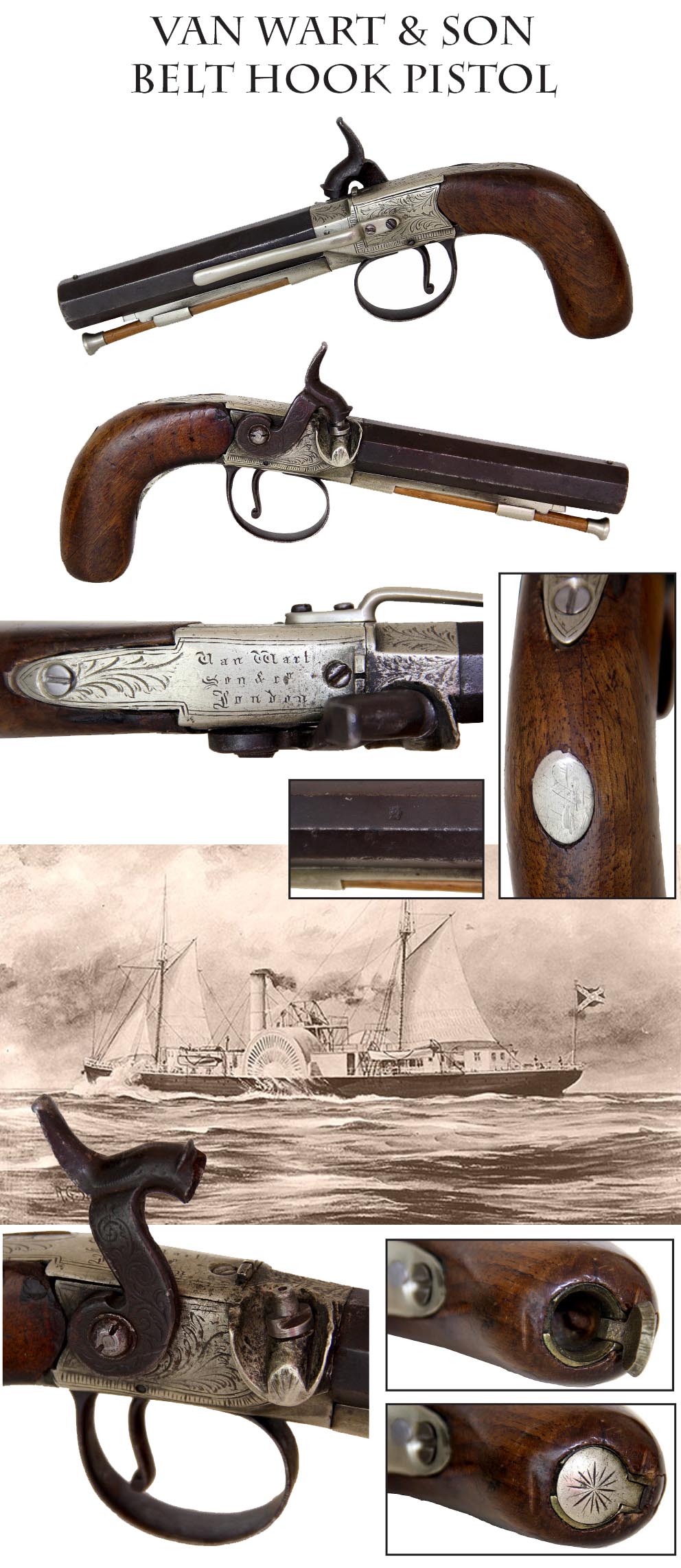
15-05-106 … Beautiful Southern Flavor Large Bore Percussion Belt Hook Pistol signed Van Wart …
A superb silver mounted, percussion pistol. Roughly 9 inches overall length. Barrel length 4 1/2 inches, bore is 50 caliber. Has classy belt hook on the side giving it a maritime flavor … shades of Rhett Butler and the Blockade Runners. NRA very good condition. Henry Van Wart (1784 – 1873), was an American businessman who became a British citizen by special act of Parliament. He founded the Birmingham Stock Exchange and had four children: William (1812 – 1868), Matilda (b. 1814), Marianne (b. 1816), and George (b. 1817). He set up a profitable business in Birmingham exporting the city’s goods to America … and largely to the south. Van Wart was friends with Louisiana businessman Frederick W. Tilton, who became Van Wart’s agent in New Orleans. He sold thousands of buttons to the Confederacy. The buttons were intended to come south through the blockade, but it is uncertain if any arrived before the end of the war. This strikingly handsome pistol also bears his firm name. Quite possibly sent to New Orleans or Charleston just prior to, or early in the Civil War … xejjv …
… $795.00 – SOLD
Click Here to E-mail Us!
Call us @ 419-842-1863
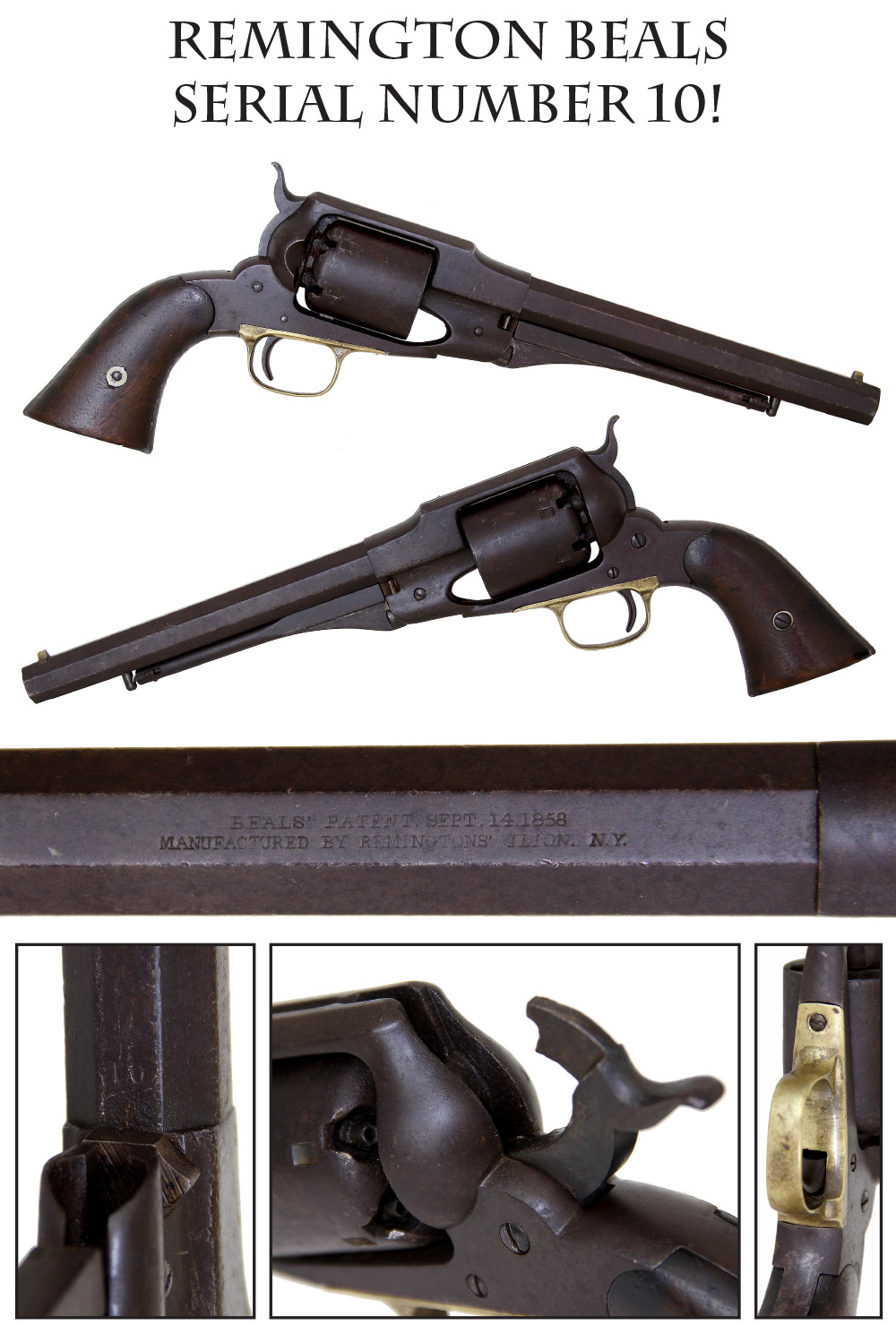
15-05-107 … Remington Beals Army Revolver Serial Number 10! …
Only 1,900 of these .44 caliber revolvers were made ca. 1861-1862 and Flayderman says 50-80 percent went to the U.S. army, but recent information indicates only 750 passed inspection, and those are with serial numbers over 725. The accepted wisdom among collectors of years ago was that the bulk of these in fact went south. Where that data came from no one seems to know. Since there are no factory records the debate continues. Bottom line… Some definitely went south and ours is definitely a candidate for one of those bearing the incredibly low serial number of 10. This gun was likely made the VERY FIRST DAY OF PRODUCTI0N. If this were a Colt the value would be in the five figures. Lucky for those of us with limited funds, the Remington collectors don’t assign such premiums for rare serials. Nice even plum-brown tone overall. Crisp barrel stamping with Beals’ Patent date and Remington’s Ilion Manufacture information. Very good walnut grips with a tight fit to the metal. Sharp serial number under the barrel. Screw heads have good color and slots not buggered up from turning. Nipples not battered. Brass triggerguard cleaned at some point, but mellowing again. The front cone sight was changed to a blade at some point during its period of use. Mechanically very good. With fewer than 2,000 made and a high attrition rate from wartime use on both sides, this is a scarce gun and downright rare with such a low serial number
… $2,450.00 – SOLD
Click Here to E-mail Us!
Call us @ 419-842-1863
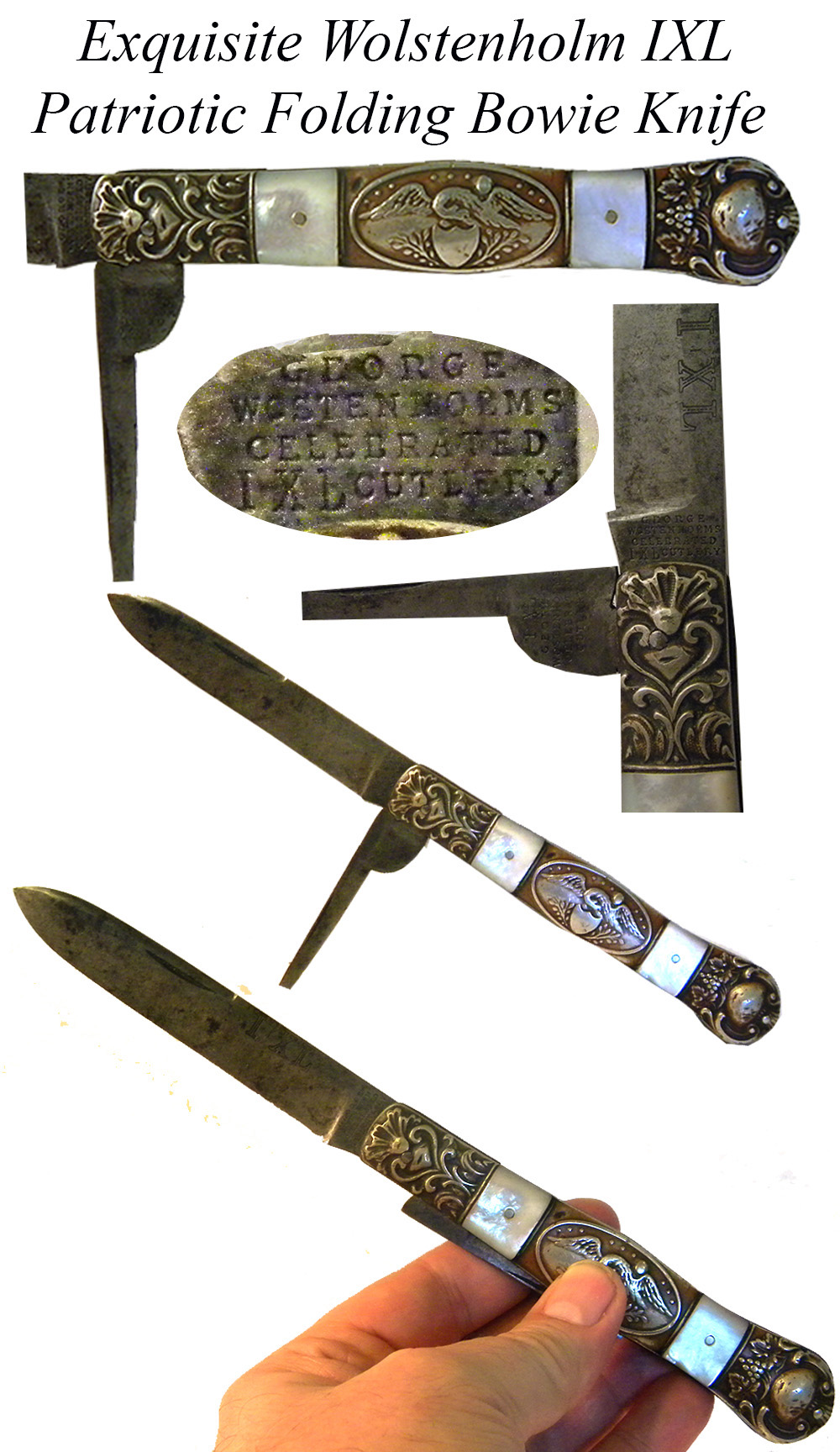
15-05-108 … Wolstenholm IXL Patriotic 2 Blade Folding Bowie Knife: …
Superb large (9 inches overall) silver mounted IXL folding Bowie Knife. Two bladed affair… main blade and an awl or punch. Tip of punch blade is broken off. Nicely marked with full George Wolstenholm firm marking and IXL brand which is of course a play on the words ” I Excel ” —- IXL. Shows expected wear and use but no abuse. Has classic American eagle motif on the central panel of the handle which is accented with mother-of-pearl insets flanking the eagle. Solid, rare, and very desirable in this large size. These were made 1850s into Civil War years and not after. A dandy patriotic knife
… $1,950.00
Click Here to E-mail Us!
Call us @ 419-842-1863
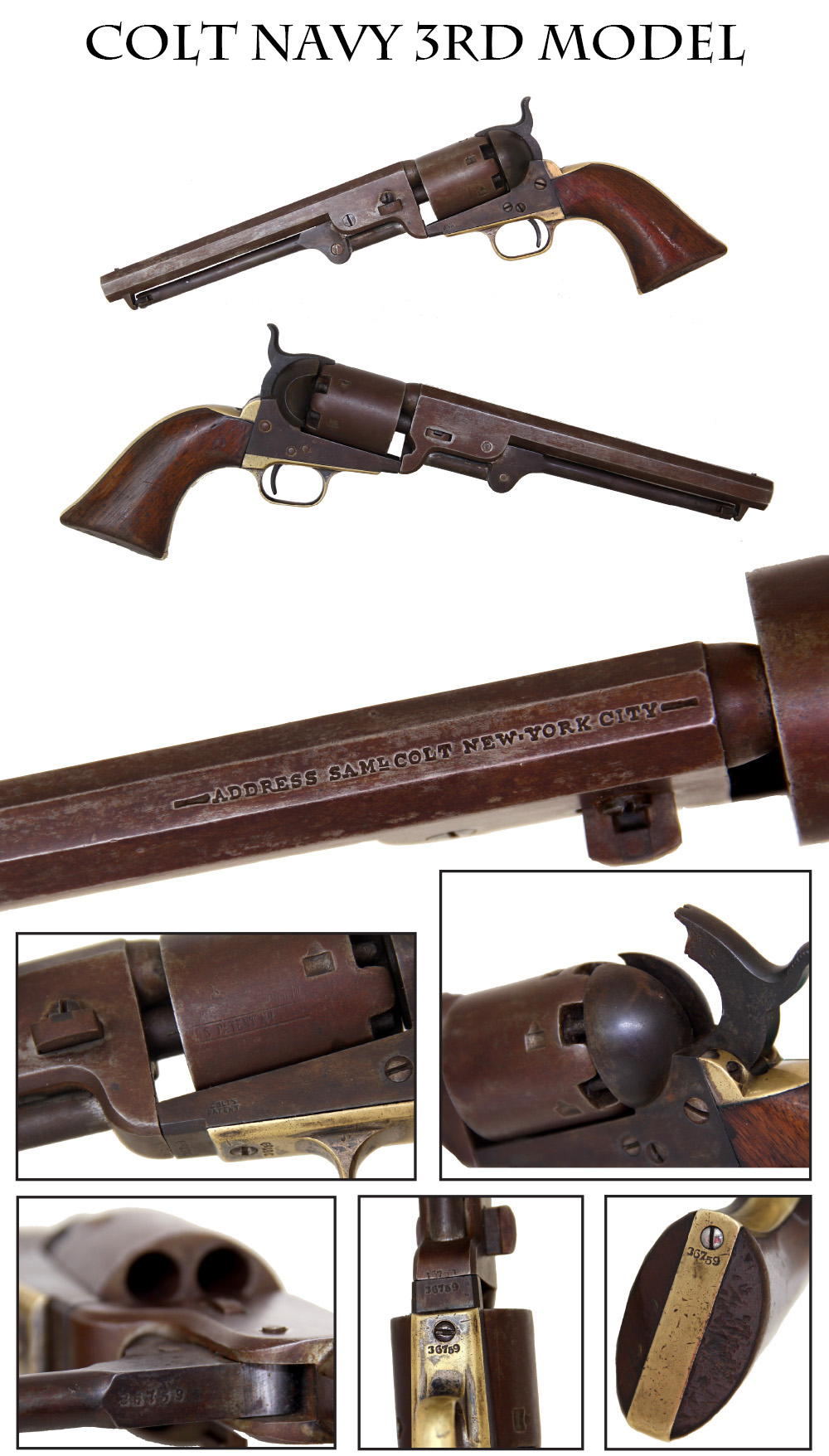
15-05-109 … Colt Third Model Navy Made in 1854 …
A nice example of the third-model navy showing very even thin mottled brown tones overall. Crisp Colt barrel address, patent markings and matching serial numbers (including the wedge) of 36,759 throughout, giving it a production date of 1854. Only traces of the cylinder scene remain, but the cylinder patent cartouche is clearly visible. Crisp action, grips have good edges and a tight fit, just a few minor handling dings. Brass is light in tone, but not bright. Some traces of silver forward on the trigger guard. A representative early example of what was probably Colt’s most popular pistol of the 1850s and 1860s. Used by Gold Seekers, early western explorers, gamblers, cowboys, lawmen, outlaws, cavalrymen, and army officers. The .36 Navy is a collecting field unto itself with dozens of variations known. This one will hold up well as an affordable, representative example no matter how big your collection gets
… $1,350.00 – SOLD
Click Here to E-mail Us!
Call us @ 419-842-1863
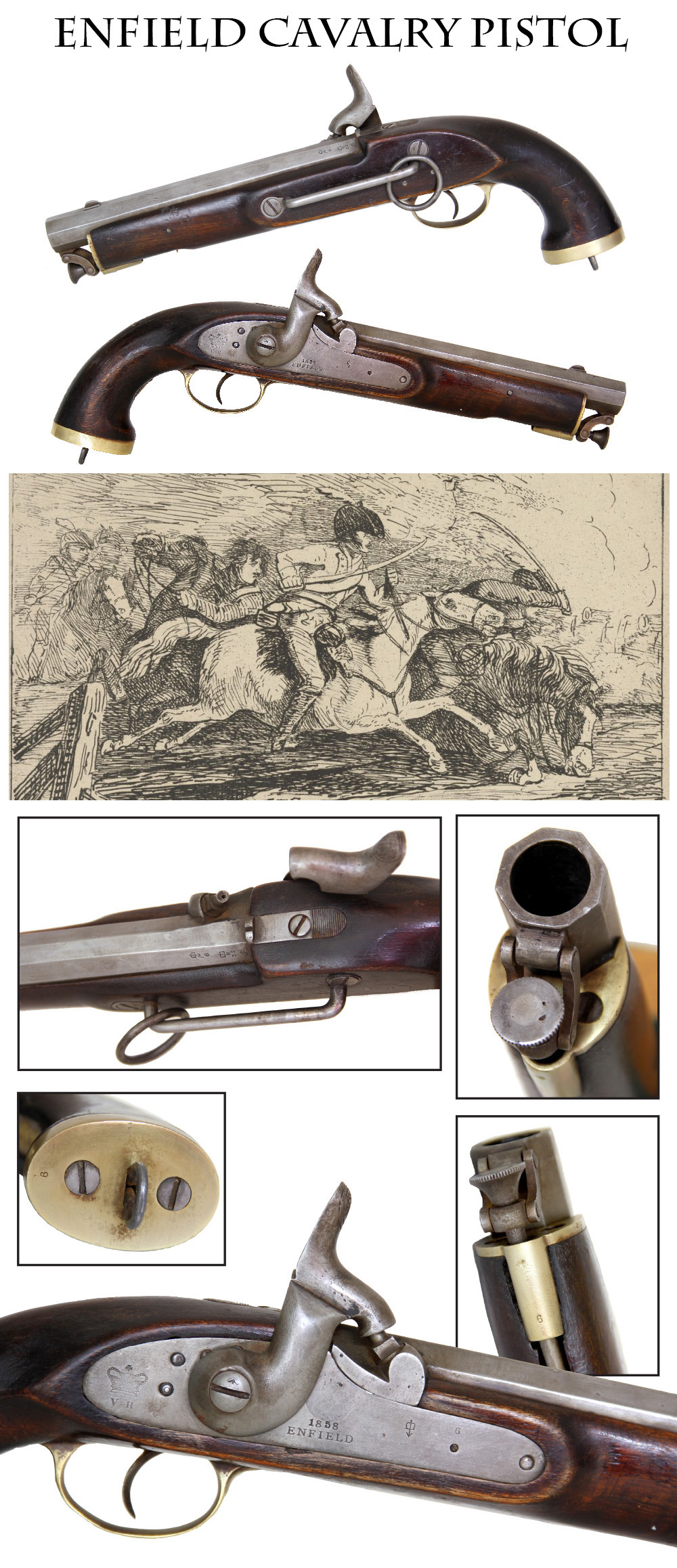
15-05-110 … 1858 Dated Enfield Cavalry Pistol …
Octagonal barrel single-shot smoothbore pistol with a lanyard ring on the butt and captive ramrod. A sling swivel bar and ring have been mounted on the offside for some reason. Slightly worn crown over VR aft of the hammer and Enfield/1858 forward. Inspection and view marks at barrel breech on left. Brass mounts including a flat brass nose cap. Wood shows decent tones, deep brown and some black. Metal a uniform light steel-gray. Considering that Colt’s revolvers were being made in England at the time, these single shot horst pistols were outmoded even before they were designed. That being said, they still have a certain romantic association with British frontier forces fighting in Queen Victoria’s “Little Wars.” I would assume that some must have come south through the blockade. If you can find data to support my hypothesis it will certainly add some value
… $895.00 – SOLD
Click Here to E-mail Us!
Call us @ 419-842-1863
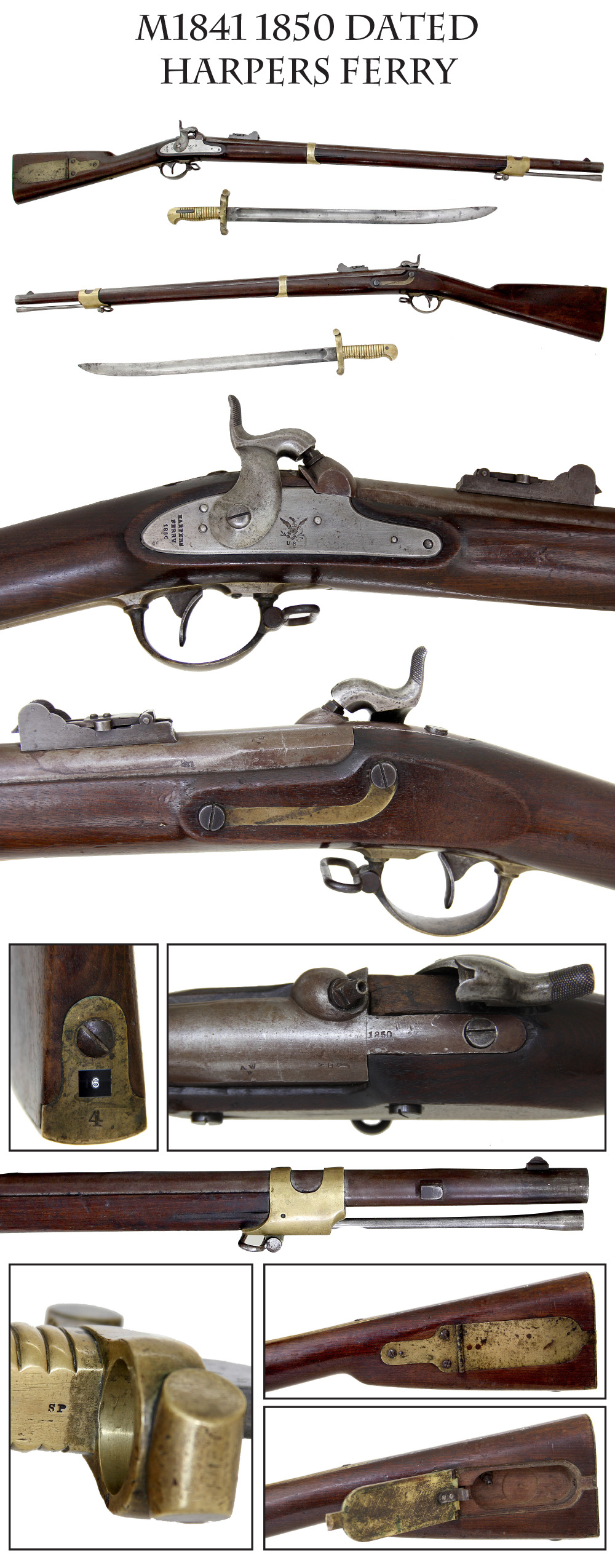
15-05-111 … 1850 Dated Harpers Ferry Rifle With Harpers Ferry Alterations in Original .54 Caliber …
A very scarce variant of the M1841 and this one is “straight Harpers Ferry” from muzzle to buttplate toe! Experiments in altering the 1841 rifles began at Harpers Ferry about 1854 in response to the development of the minie ball and then the adoption of the 1855 series of arms. Increased ranges required the development of new long range rear sights, and it was thought prudent to give the rifleman a close-in weapon as well by allowing the mounting of a bayonet. (One of the great mysteries in most collector minds is why the M1841s were initially made without any provision for a bayonet.) This one fits Flayderman’s Second Style alteration, with the fitting of a saber bayonet lug, shortening of the stock and fitting of the shorter 1855 style front band. Some collectors would follow Beckford’s terminology and call this the 1855 type with a Type III rest slide sight and the 1855 type bayonet lug made without a guide and 1855 front sight with the shorter 1855 front band. These were altered in several batches between 1856 and 1858. This one may belong to the 1857-58 batch since the rear sight is graduated in 100 yard increments up to 500 yards, starting with “1” on the side wall. This has very clear lock plate markings showing just the slightest bit of softening: Harpers/Ferry/1850 rear of the hammer and the Harpers Ferry eagle over US forward of it. Matching crisp 1850 barrel date along with sharp VP eagle proofs and barrel inspector initials. Wood is a warm mellow brown, sharp edges to the lock platform (aka lock table); lock plate a muted silver, barrel with lots of thin plum brown. Brass bands a bit light, side plate and triggerguard more muted, brass patchbox and buttplate with dark spots. Nipple in place inside the patchbox. Rack number “4” engraved on the buttplate tang. Correct 1855 style saber bayonet with brass matching the barrel bands in color, good edges, and blade a bright silver gray with some darker gray areas. Also has the original .54 cal steel head ramrod which is 100% proper for this model rifle. One of the most desirable of all Mississippis is this Harpers Ferry alteration with long range rear sight and bayonet lug. A super rig … rde-sing …
… $4,850.00
Click Here to E-mail Us!
Call us @ 419-842-1863
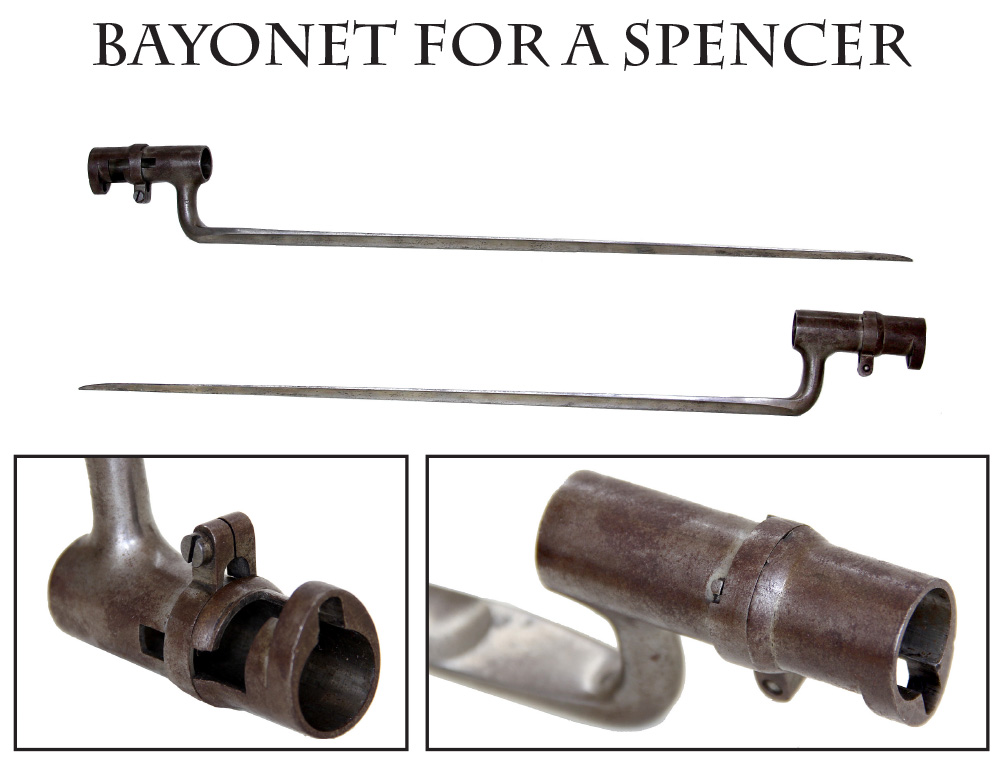
15-05-112 … Spencer Rifle Bayonet …
About 12,000 Spencer rifles were delivered during the Civil War. The vast majority were equipped with socket bayonets very similar to the standard Springfield bayonets, but differing in the socket and bore diameters and in the position of the locking ring stop pin, which is about 10 degrees further around the socket, allowing for a more secure contact between the locking ring and the bayonet stud at the base of the front sight. These bayonets are unmarked (no US stamp) as is this one, only some having a small letter stamped ahead of the mortise. These bayonets are tough to find, but make a key addition to the Spencer rifle as issued to thousands of infantrymen, who were happy to have a “horizontal shot tower,” and one ready for close-in work if necessary, as well. Very clean, bright gray with just some age browning on the socket … xd …
… $450.00 – SOLD
Click Here to E-mail Us!
Call us @ 419-842-1863
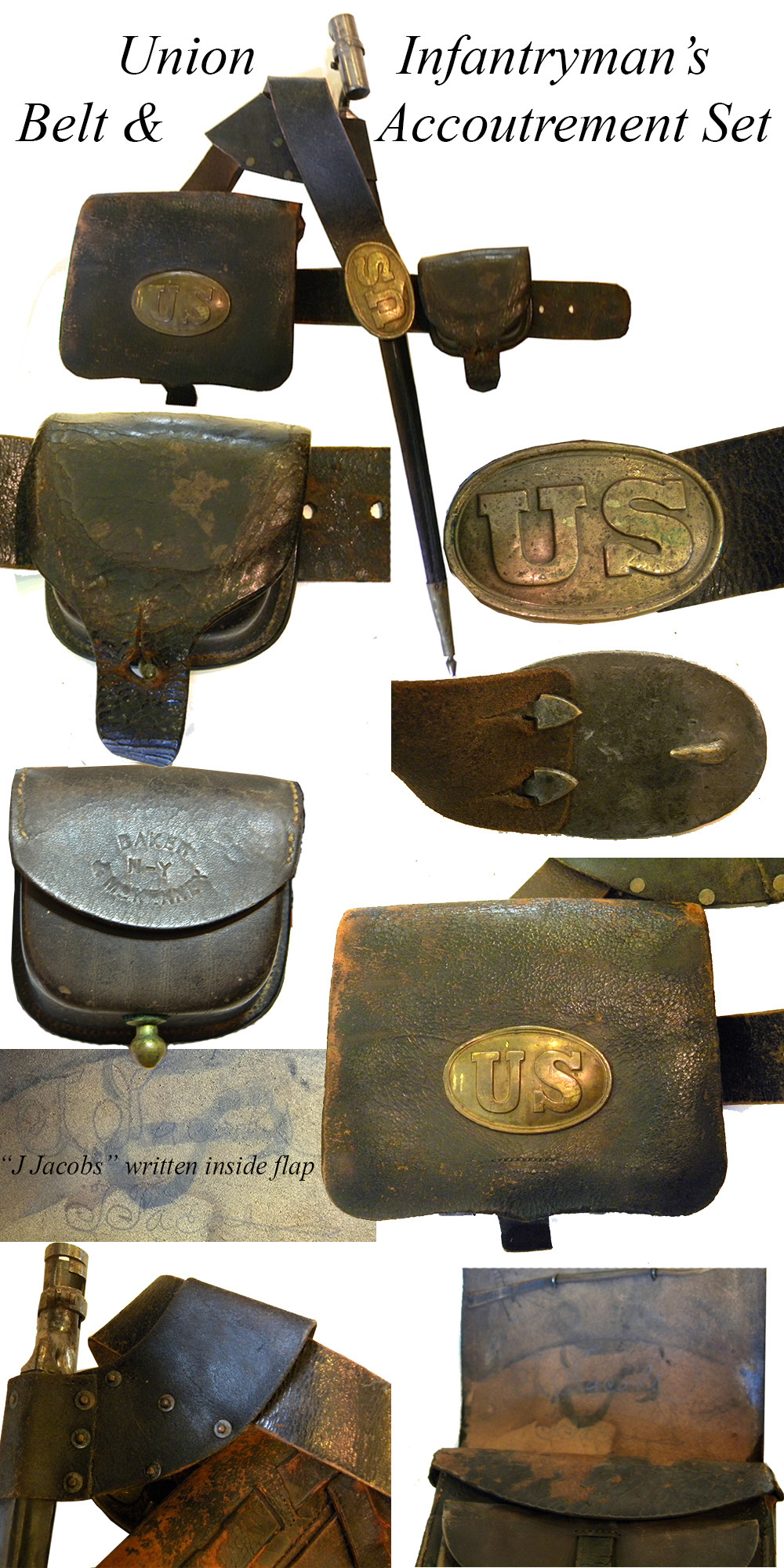
15-05-113 … Civil War Infantry Belt and Accoutrement Set Signed J. Jacobs …
Nice mid war rig. The belt is an excellent condition black harness belt from which the soldier removed the brass adjuster. The finish is outstanding and the oval US buckle is superb with two arrow hooks and a heavy prong. They bayonet is the Enfield socket bayonet and it is housed in a standard mid war US scabbard having the frog secured with eight rivets. The cap box is solid, no fleece remaining, but belt loops, inner flap and latch tab hole intact and not torn, and clear Baker & McKenny makers stamp. The .58 caliber cartridge box is the early pattern and retains its oval US cartridge box on the front flap. Inside the flap is written a large 28 in ink and then the name J. Jacobs twice in pencil. Latch tab, belt loops, and inner flap firmly in place. No tin liners. Finish is excellent except for the inner flap which is flaked. The bayonet is a very good Enfield socket bayonet, bright with some light pitting and gray spots. This is a good representative set typical of a mid to late-war veteran in the field … noco
… $1,150.00 – SOLD
Click Here to E-mail Us!
Call us @ 419-842-1863
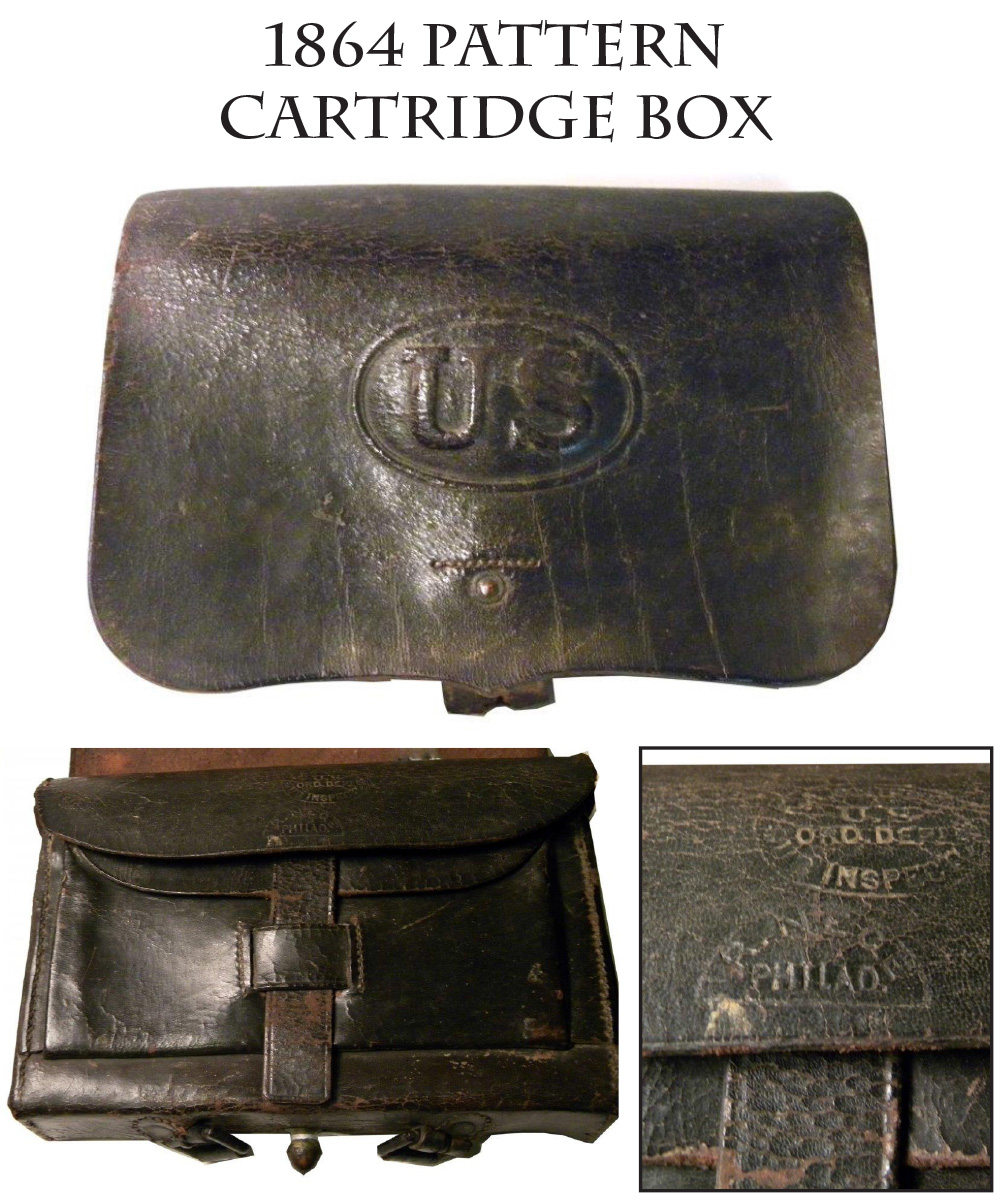
15-05-114 … Top Notch Example of Infantry 69 Caliber Cartridge Box …
This is the 1864 pattern Union Army box with the US oval motif embossed directly onto the leather front flap. Earlier boxes of course had the oval brass US box plates. This cartridge box is proof-positive that the pre war 69 caliber muskets were still in active service late in the Civil War. If they were no longer in service the ordnance department certainly would not have contracted to buy more in the new pattern. In addition to being on the very scarce side, this box is also in excellent condition. Marked on the inner flap with NECE maker’s stamp and vivid inspector’s cartouche. One of the tin liners is still present inside the box. All straps and buckles are firmly in place and the leather finish is outstanding. One tiny sewn repair to the left side of the latch tab. About invisible. One of the best such boxes available
… $395.00 – SOLD
Click Here to E-mail Us!
Call us @ 419-842-1863
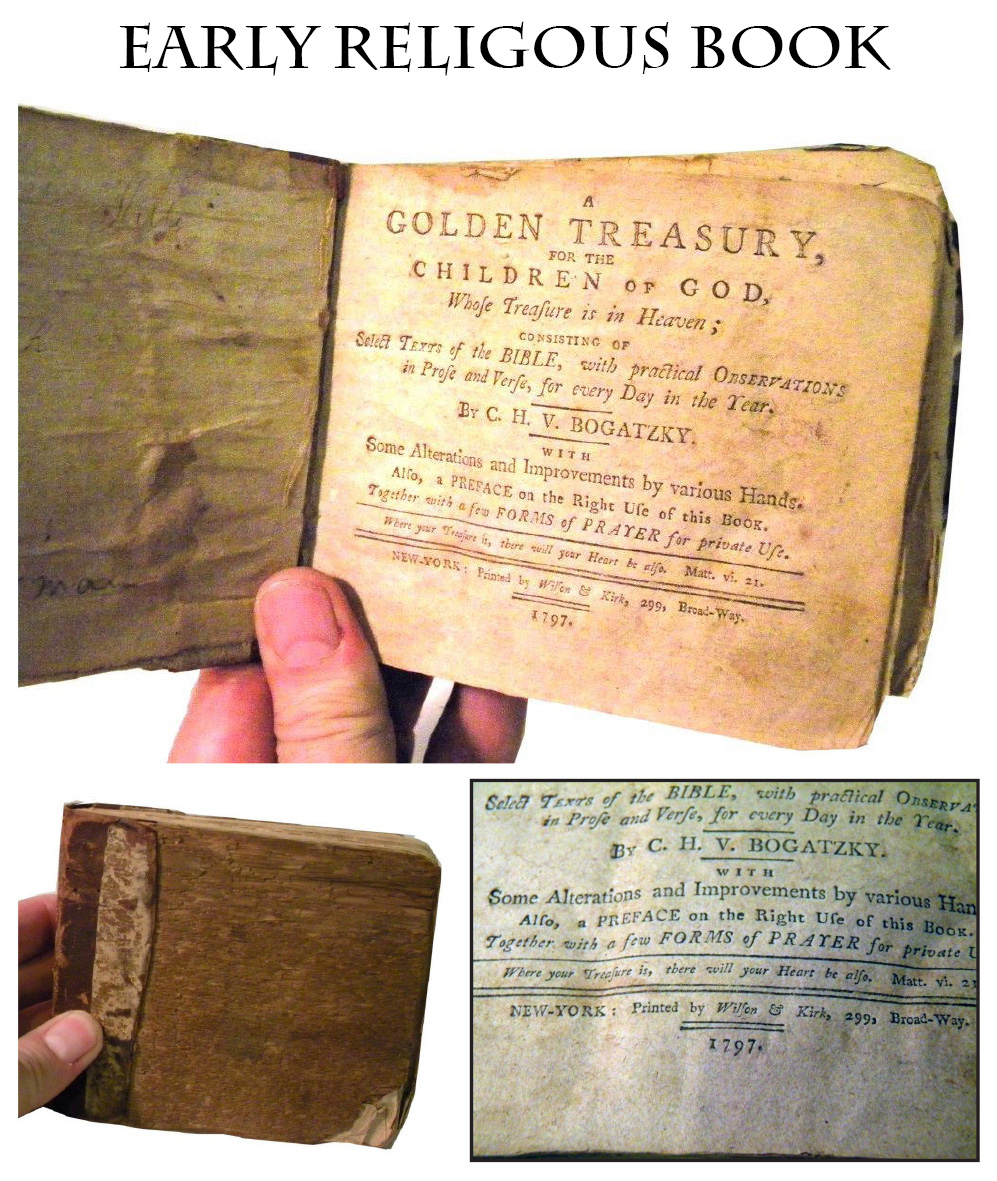
15-05-115 … Early Religous Book …
An early New York published pocket volume titled “A Golden Treasury for the Children of God,” by C.H.V. Bogatzky. Printed by Wilson and Kirk, 299 Broadway in 1797. Leather spine with thin wooden covers. A compilation of selections from the Bible in verse and prose. An interesting memento of the very earliest days of the Republic and a suitable “go-with” in a collection of material carried west by settlers trying to civilize the wild frontiers of Ohio, or what might have been found in the knapsack of one of Wayne’s Legion… or an 1812 soldier’s effects
… $235.00 – SOLD
Click Here to E-mail Us!
Call us @ 419-842-1863
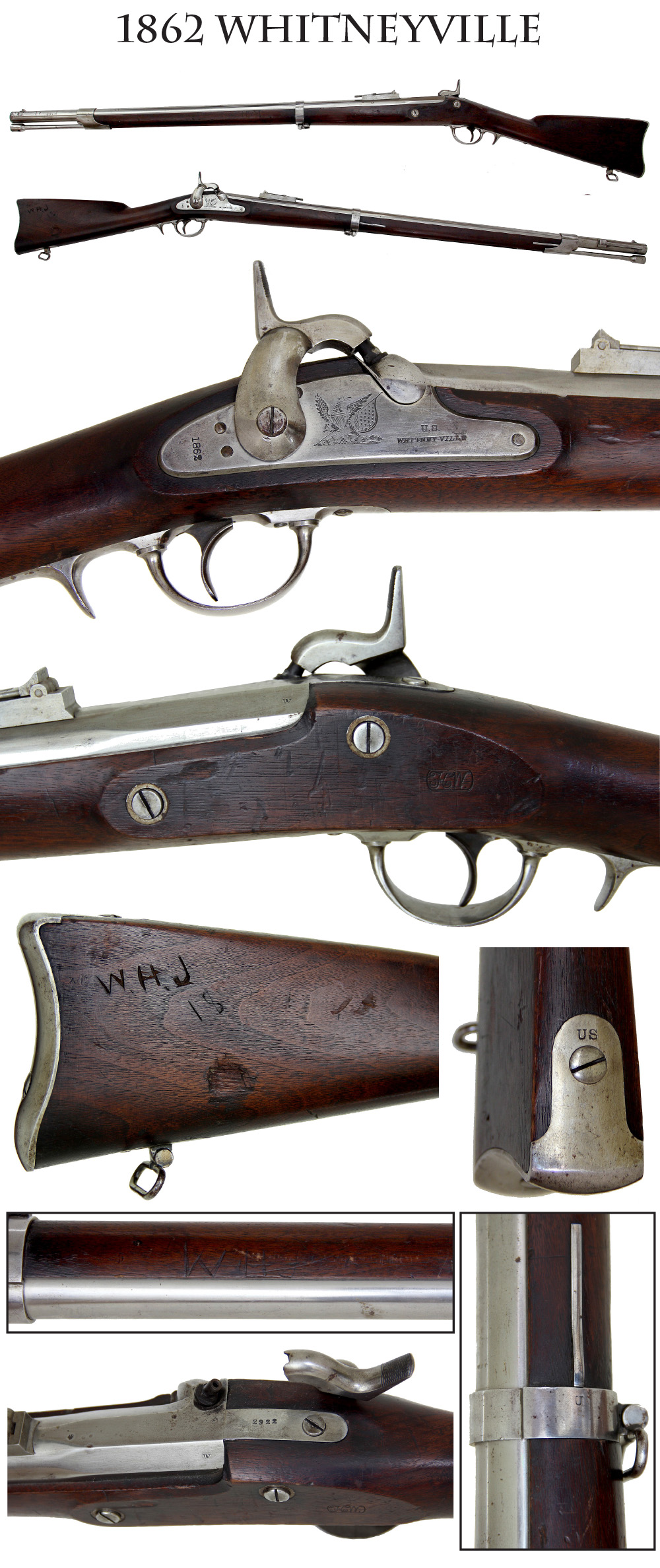
15-05-116 … 1862 Whitneyville Plymouth Navy Rifle …
Crisp example of this .69 rifle developed by J.A. Dahlgren for naval use. In the bright, with its special rear sight in place, as are the bands, springs, both swivels and bayonet stud and guide for a saber bayonet. Sharp 1862 date on the lockplate and eagle over stand of arms with US over Whitneyville forward of the hammer. Sharp edges to the wood at the lock platform and offside and a crisp inspector’s cartouche. Serial number 2922 on the breechplug tang. Original ramrod in place as well. There are some dings and shallow divots on the offside flat and some handling marks forward of the lock platform, but overall fine to excellent condition. A set of initials “WHJ” over “18” are carved on right side of the stock, with deeper divot under them just forward of the rear sling swivel, and a similar “WHJ” more lightly scratched on the forestock near the barrel channel. A scarce and significant piece in American long arm experimentation and development that merits a place in a US martial arms, Civil War, and a US Navy collection. A very showy gun. 100% original, 100% complete, mechanically perfect … overall NRA fine to excellent condition … “Minty” … ah
… $2,650.00 – SOLD
Click Here to E-mail Us!
Call us @ 419-842-1863

15-05-117 … Civil War Infantry Belt Set …
This is the way most infantry belt rigs carried by veterans probably looked by the end of the war. The belt is a Nece made belt, showing that company’s stamp and an inspector cartouche and the brass C-clasp keeper that came in around 1862 and early 1863. The plate is an arrow back plate is also a mid-war product with a nicely beveled hook and shows various dings from field use. They bayonet is the standard .58 socket bayonet for a Springfield or one of the many contracts, and is mounted in an early-war scabbard having the frog secured to the body by stitching and two rivets. The cap box is solid, no fleece remaining, but belt loops, inner flap and latch tab hole intact and not torn. The .58 caliber cartridge box is the 1864 pattern with an embossed US and showing a visible inspector cartouche. Latch tab, belt loops, and inner flap firmly in place. No tin liners. The bayonet is bright with some light pitting and gray spots, but a clear US over a small “s.” The bayonet scabbard and frog show rubbing to the finish from flexing and wear, but are solid and the belt loop shows just enough flexing to make it obvious it hung on a belt for a hundred years. The cartridge box has light alligatoring to the finish, but aside from some light abrasion, the finish is good and in place. This is a good representative set typical of a late-war veteran in the field. Even the absence of the cartridge tins is a plus- Rufus Dawes of the 6th Wisconsin commented during his service as an ordnance officer that many of the men he inspected after an engagement were without them, having yanked them out to get to the stored ammunition packs in their bottom compartments and been too busy in staying alive and driving back the enemy to bother trying to shove them back in. A great display item, and getting scarce
… $950.00 – SOLD
Click Here to E-mail Us!
Call us @ 419-842-1863
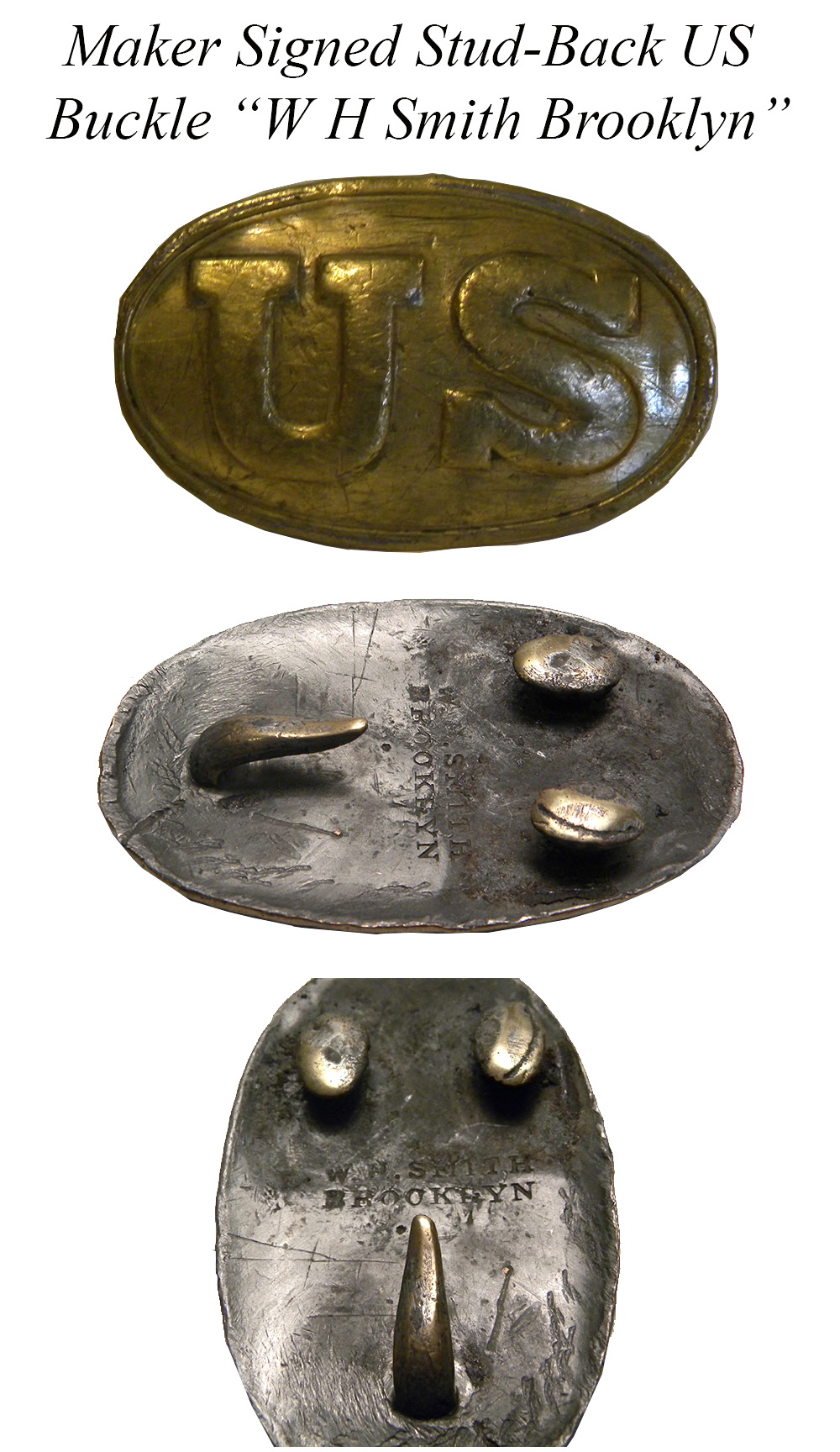
15-05-118 … Maker Signed US Stud-Back Buckle / W H Smith Brooklyn …
One of the most sought of all US waist belt plates from the Civil War is this maker stamped early style buckle with two oval studs and a heavy prong. Neatly stamped into the lead solder back is the firm name of “W. H. Smith Brooklyn”. Overall VG condition. Face shows light polishing from years ago. Makers’ stamp is crisp and clear. These were scarce and highly sought forty+ years ago when I began collecting. A good solid specimen priced realistically
… $325.00 – SOLD
Click Here to E-mail Us!
Call us @ 419-842-1863

15-05-119 and 15-05-120 … Pair of Grant Photographs Annotated By The Photographer …
A very interesting pair of cdvs: one of U.S. Grant and the other of his father, Jesse Root Grant, both annotated by the photographer. The first is a vignette mid-chest up portrait of Grant wearing his major general’s coat with lapels open, but his shoulder straps clearly visible. In period ink across the bottom is: Gen. U.S. Grant / “Vicksburg-“/ Sept 1863″- /By Barr & Young.” The second cdv is of Grant’s father, Jesse Root Grant (1794-1873.) With an old ink note below the vignette chest-up view reading: “Father of Lt. Gen U.S. Grant/ Uncle Jesse Grant/ Vicksburg ’63/ O.N.T.” On the reverse of the card in the same hand is: “Picture made by the undersigned in 63 at Vicksburg/ O.N. Tyrer (?) Operator for Barr, Young Army Photo’s.” The last name of the writer is a bit unclear, but his meaning is plain. He was the “operator,” the actual cameraman, who took the photo of Grant’s father in the studio of Barr and Young who billed themselves as “Army Photographers” in Vicksburg after it was taken by Grant. Both these photos came together and chances are that the inscription on the general’s card is by the same man in his younger days and gives a nice date for the image: September, 1863. The inscription on Jesse Grant’s card not only shows the unsteadiness of an older hand, but gives Grant’s rank as Lt. General, showing it was written somewhat later.
Both cards have spots and staining. The general’s image has “US Grant” in more modern ink added on the reverse and the image of Jesse Grant has his identification in old faint pencil on the reverse as well. For all their faults, however, this is a remarkable pair of images retained by one of Ball and Young’s “operators,” and they are certainly “worthy of further research.” In the near 45 years that I have collected Civil War items I have never owned nor seen for sale a photo of Grant’s Father. Apparently dear old dad visited his famous son in Vicksburg at the end of the summer in 1863. Rare pair and even more so as retained relics saved by the photographer himself
… $1,250.00 – SOLD
Click Here to E-mail Us!
Call us @ 419-842-1863
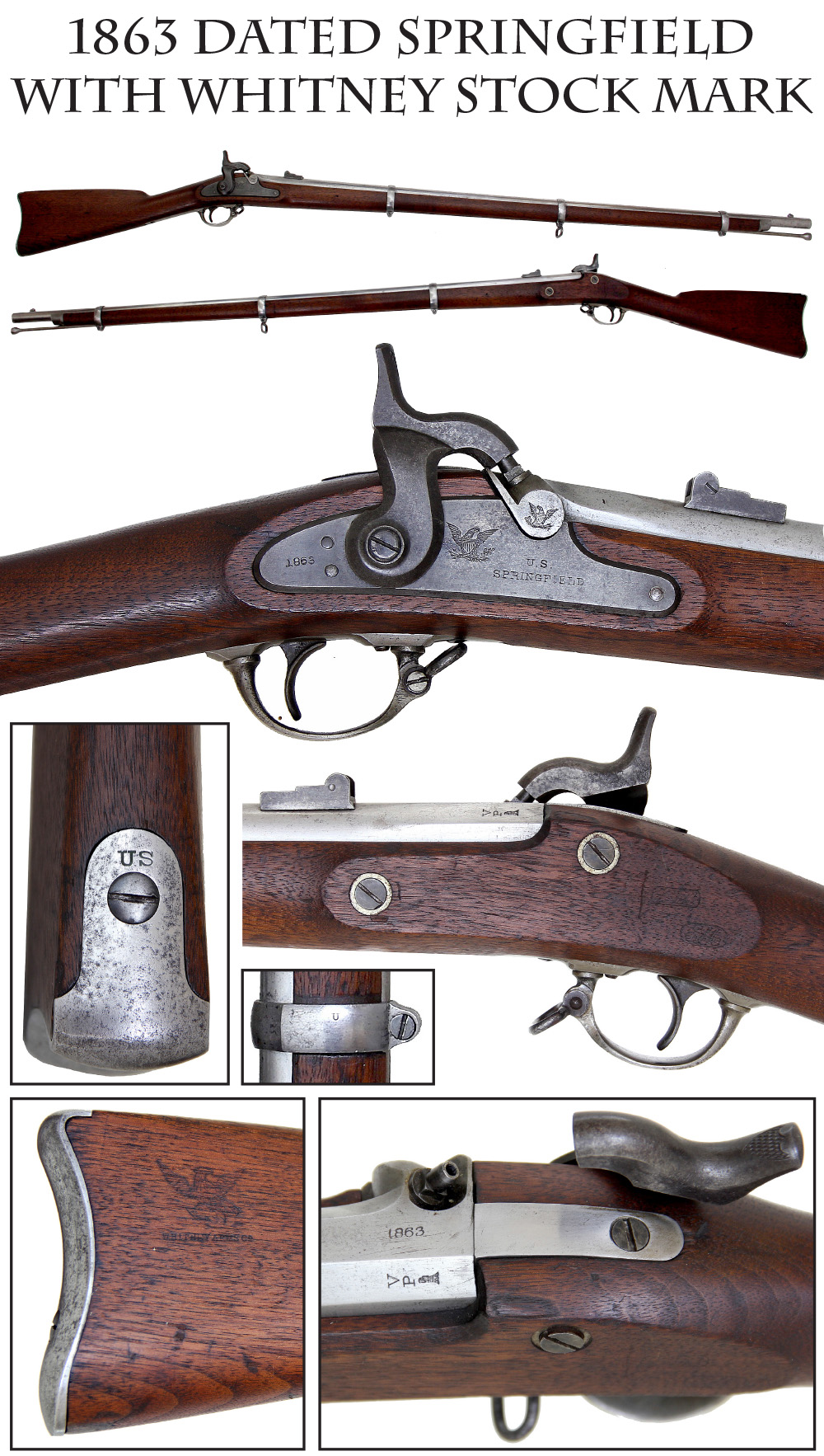
15-05-121 … Minty 1863 Type-1 Springfield Rifle Musket – Whitney Assembled …
A near mint ’63 Springfield. 100% original, 100% complete, mechanically perfect. All markings, cartouches, etc are vivid and crisp. Bore is new. All parts are excellent to near mint. On the right side of the butt stock is impressed a federal eagle and the wording Whitney Arms Co. This tells us that this musket was assembled by Whitney using Springfield parts. This gun is 100% Springfield from muzzle to butt plate. The Whitney mark shows that it was not assembled at the US Armory. After the war Whitney Arms bought wagon loads of Springfield parts and assembled them for sale on the commercial market. The gun is a dead real Civil War Springfield musket in all respects, just assembled outside the arsenal … ron-o-wbbjj
… SOLD
Click Here to E-mail Us!
Call us @ 419-842-1863

15-05-122 … A Real “LOUISIANA TIGER” Identified Relic Confederate Enfield – Likely A gettyeburg Pickup …
This turned up last Fall at an upstate New York outdoor antique show/flea market. It is a battlefield relic British P-53 Enfield broken at the wrist, with no lock, rear sight, ramrod or upper band, which had lain outdoors for some time. The barrel is too crusty to make out any inspector or proof marks or rifling, but there is a faint oval stamp on the offside with an
“I.C”
which Pritchard and Huey identify as a Confederate viewer’s mark, likely Isaac Curtis or an employee of S. Isaac, Campbell and Company (see The English Connection pages 65, 110 and 112). More significantly and also dead real are the initials
“W.C.”
and the unit designation
“B 6 La”
stamped and carved on the right side of the butt stock about half way back, on the flat. The initials “WC” and the regimental designation “B 6 La” are unambiguous and Confederate rosters and compiled service records narrow down the identification. There are three possible units for the company and regimental designation: 6th Louisiana Infantry, of the Louisiana Brigade, known more popularly as the Louisiana Tigers 6th Regiment of the Louisiana European Brigade 6th Louisiana Infantry African Descent, a two-month Federal unit enlisted in 1863 No “WC” appears on the rosters of the regiment of the European Brigade, and only one man with those initial, William Curtin, appears on the roster of the 6th Louisiana A.D., but he is in Company G.
We are therefore left with the 6th Louisiana Regiment, which had eight men with those initials, only three of whom served in Company B: W.C. Cavanaugh; W. Coffee (Coffey); and W. Cooney. Cooney is unlikely given the initials carved in the stock He was illiterate: he signs his oath of allegiance using an “X” placed next to the note “his mark.” W. Coffee (Coffey) and William C. Cavanaugh were both at Gettysburg. Coffee was 19 years old, single, and employed as a cab driver when he enlisted for 12 months 5/29/61 in New Orleans; Re-mustered for the war on 2/13/62, he was captured Oct. 19, 1864 at Cedar Creek; Paroled for exchange 1/17/65 and subsequently noted on 2/10/65, “since returned, a brave soldier.” Absent on detail for Harpers Ferry and Sharpsburg, but present at all other engagements till captured.
William C. Cavanaugh was 32, married and a laborer when he enlisted 3/6/62 for the war; he was wounded at Cedar Mountain in August, 1862, “and absent sick till Second Fredericksburg and Winchester,” the first being the fighting at Fredericksburg during the Chancellorsville campaign and the second referring to the Second Battle of Winchester in June, 1863, during the Gettysburg campaign when Ewell’s corps faced off against Milroy’s troops. On July 2, 1863, Cavanaugh was wounded in action at Gettysburg when Hays’s brigade was involved a charge and fierce hand-to-hand fighting among Union artillery pieces along Cemetery Hill. Cavanaugh is once again erroneously listed as a deserter in some subsequent muster rolls, but in others appears as “missing since July 2, 1863” and “taken prisoner at Gettysburg,” and was actually wounded and taken prisoner. He is on the July 18, 1863, list of casualties of Hays Brigade “in the battles near Gettysburg, Pa., July 1 to 3, 1863” as “wounded” as well as “wounded” on an undated list of killed, wounded and missing of Early’s division July 2. He shows up on a Federal list of sick and wounded Confederates in hospitals in and about Gettysburg, Pa., on July 22 with wound listed as “leg, slight” and the remark “favorable,” and on a list of prisoners transferred to the Provost Marshal. He remained a prisoner of war for a year and a half before finally taking the oath of allegiance 1/10/65.
I naturally incline to this being a battlefield pickup from Gettysburg. The damage certainly conjures up pictures of the Louisiana troops engaged in close-in fighting where “clubbed muskets” were freely used: I show a copy of Alfed Waud’s drawing of the attack printed in Harpers Weekly. The upper forward area of the wrist has been completely sheared off and the lower wood broken at the forward trigger guard tang. This is not damage from careless handling- someone was very angry or wanted to render this inoperable and make sure it could not be used again. During the later 1800s and early 1900s a number of relic dealers in Gettysburg made a living selling battlefield souvenirs to visitors and returning veterans. Danner is one of the big names, but there were others such as Good. There is a lightly shaved or sanded patch on the stock that looks left over from a paper tag, painted description or numerical tag such as these dealers in relics used. There is also a small hole on the right side of the butt near the regimental identification that might have been used to mount the rifle with a peg on a relic board, which would show off the carved initials on the off-side. I don’t see any signs of attaching the fore-end and barrel, but often a simple piece of wire was used. This is an extremely cool Confederate Louisiana Tiger id’d relic, and most likely one from the Holy Grail Battlefield of Gettysburg… xxadvv
… $1,795.00 – SOLD
Click Here to E-mail Us!
Call us @ 419-842-1863
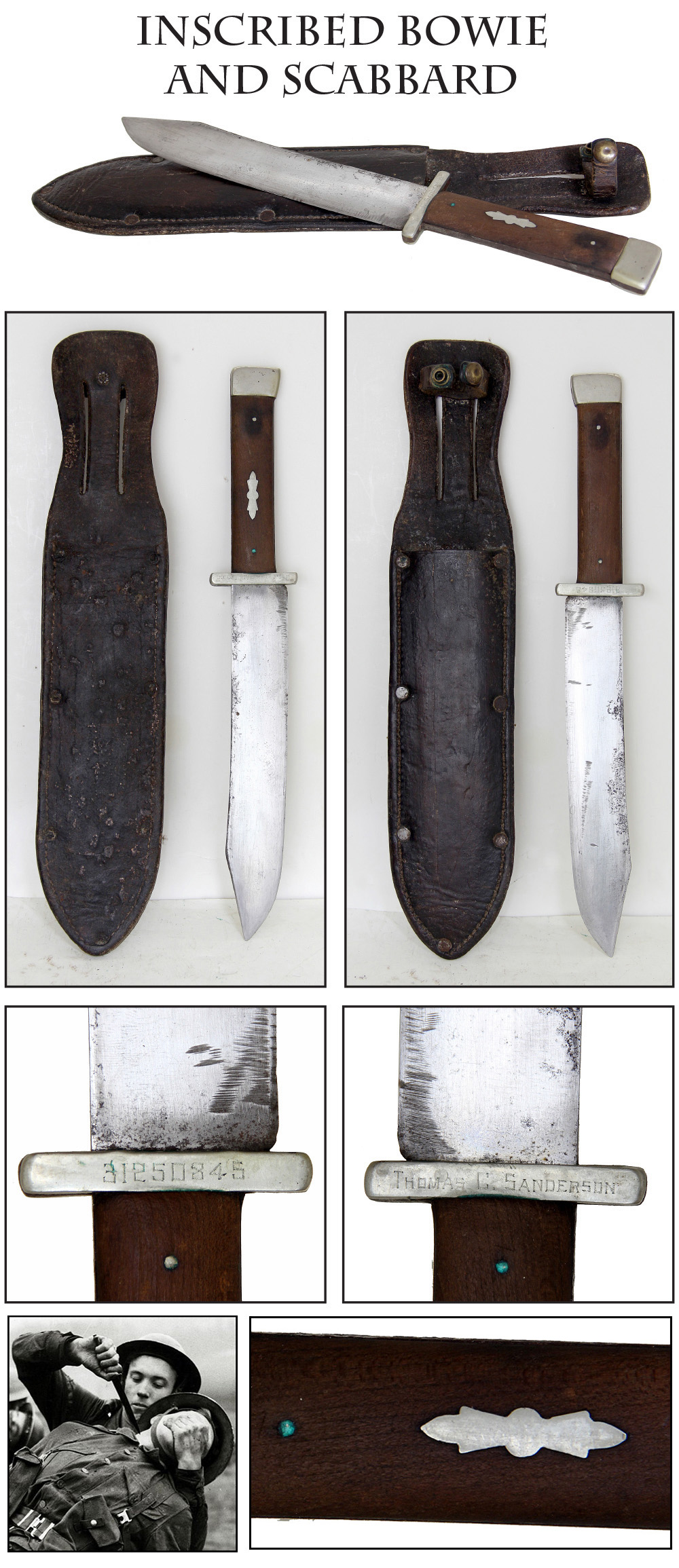
15-05-123 … Soldier Identified / Theater Made World War two Fighting Knife & Sheath …
A classic large Bowie knife and scabbard typical of those carried by our GI’s who saved the world from the Axis powers by killing Hitler’s Krauts and Hirohito’s Japs during WW2. 13.25 inches overall. Blade length 8.25″. Leather scabbard is substantial, thick, sewn and riveted. This weapon is researchable as it is engraved with the soldier’s name and serial number. On the cross guard is inscribed … ‘Thomas C. Sanderson” and on the other side “31250845”. I just bought this and have found a tiny bit of data on our man. He was a white man from Fairfield County, Connecticut and was born in 1920. He enlisted November 14th 1942 at Hartford, Ct. in the US Army for the duration of the war plus six months. He had one year of high school and was single with dependents. He is listed as being a Warrant Officer which is somewhat rare for WW2 Army enlisted personnel. I will leave the rest of the research for you. The WW2 data is just now becoming available online to historians and collectors and will prove to be an exciting quest for years to come. A very interesting World War Two fighting knife with history. These cost but a fraction of what the Civil War Bowie knives cost
… $425.00 – SOLD
Click Here to E-mail Us!
Call us @ 419-842-1863
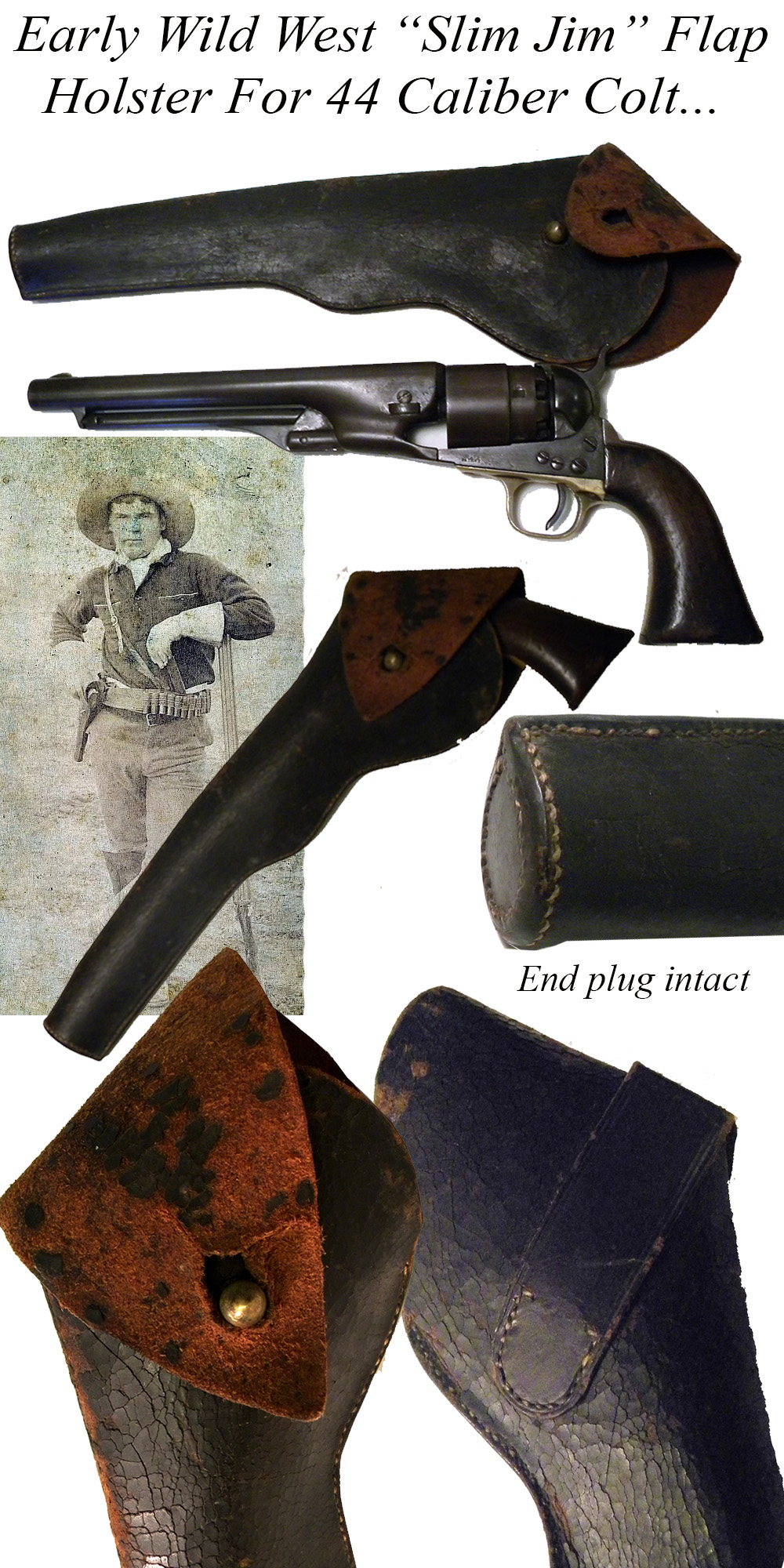
15-05-124 … Top End 1860s Slim Jim Holster for 44 Caliber Colt Army or Richards Conversion …
A classic early piece of gun leather. Typical of the holsters carried by southern partisans, Texican gun slingers, frontier cowboys, and western desperados. This is the real deal. Overall excellent condition with some finish loss on the flap only. End plug firmly in place as is the belt loop on the reverse. All stitching tight and sound. If you have one of the early Colt cowboy conversions or a standard 1860 Army this holster will look great in the display. Far cooler than standard army issue examples
… $465.00 – SOLD
Click Here to E-mail Us!
Call us @ 419-842-1863
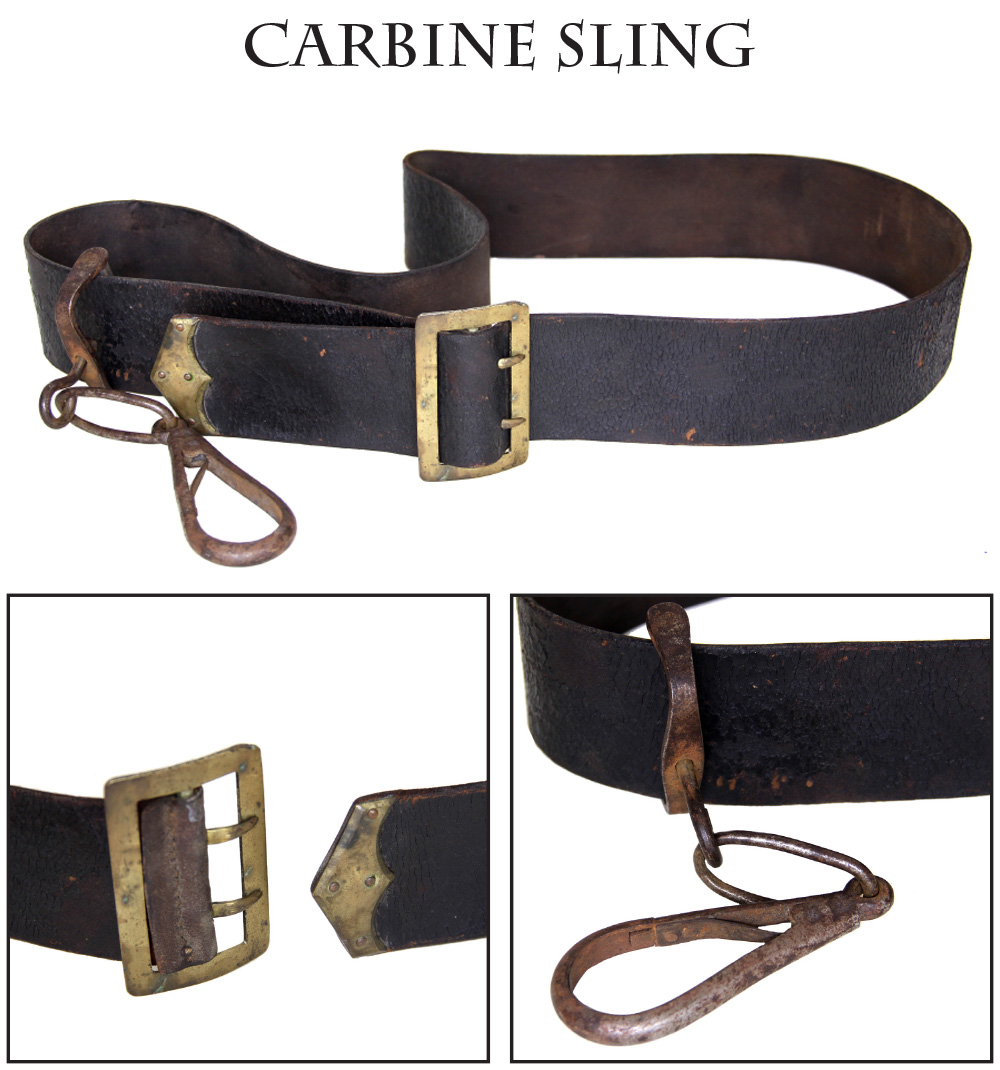
15-05-125 … Early-War Pattern Cavalry Carbine Sling …
Not a lot has been published on the development and chronology of Civil War carbine slings, but some interesting research has been available at some shows through displays done by top-notch researchers like Paul Johnson and Fred Gaede. Some old “received wisdom” like buff leather being pre-war and bridle leather being later has gone out the window. It has become clear that the materials overlap and the important distinction is the construction. Here is a real early war example of the regulation sling worn by cavalry troopers to bear the weight of carbine and keep it close at hand. The belt is 2 inches wide and full length at 56 inches. This is not one of those salvaged from Bannerman’s after the brass parts were cut off and reassembled. This is an original unaltered sling. The original bat-wing tip is in place and, most importantly, the buckle is secured with its original single line of stitching running across the width of the belt. This was the method of securing the buckle before the war and into the very early war. The problem with that method, of course, was that under severe field conditions and heavy use that stitching formed a nice perforated line across the sling that could weaken and tear. Mid-war and later war slings were changed first to parallel lines of stitching running lengthwise and lastly to a combination of stitching and rivets, like the mid and later war cavalry saber belts. Here is a rare chance not only to acquire an intact early war carbine sling, but one with exceptional condition: lots of original finish and just minor wear and flexing. A key cavalry accouterment and not easy to find in this configuration or condition. With its original snap swivel, of course. Very rare being the early war design with single line of stitching
… $1,395.00
Click Here to E-mail Us!
Call us @ 419-842-1863
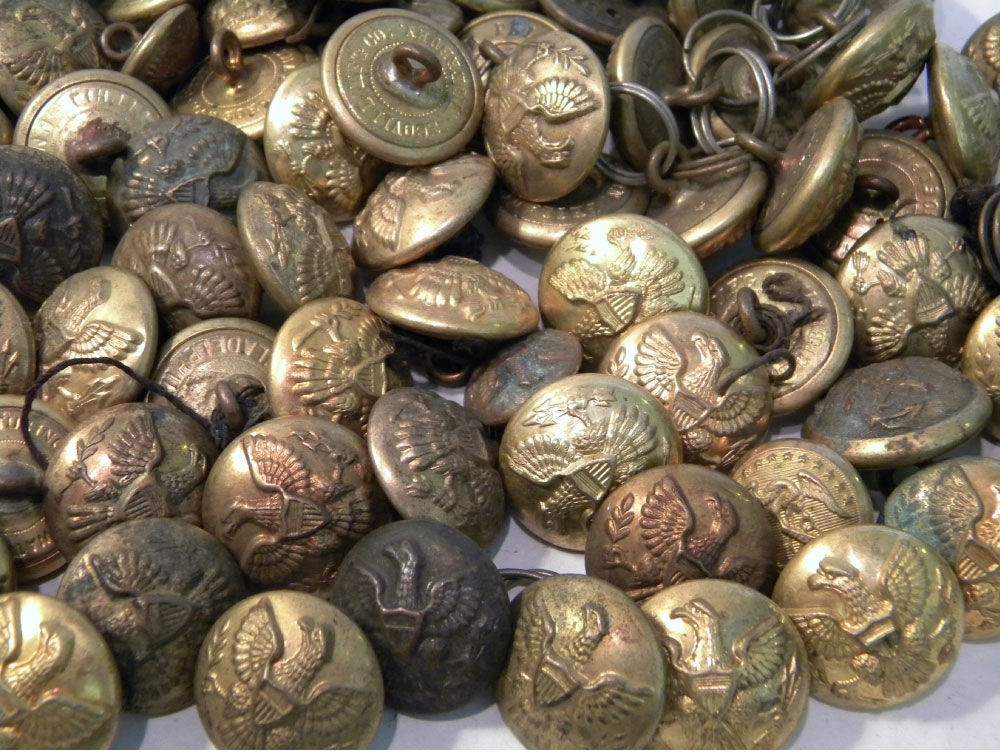
15-04-126 … A lot of TEN Original Indian War Large Size Eagle Coat Buttons.
A few years ago at an eastern Pennsylvania auction I bought a couple large bags full of these early Indian Fighters buttons and then I put them aside and forgot about them. I just stumbled across them again …. So here is a great opportunity…. ten original buttons for $25.00 These can be mailed inexpensively in a padded envelope.
… $25.00 for 10
Click Here to E-mail Us!
Call us @ 419-842-1863
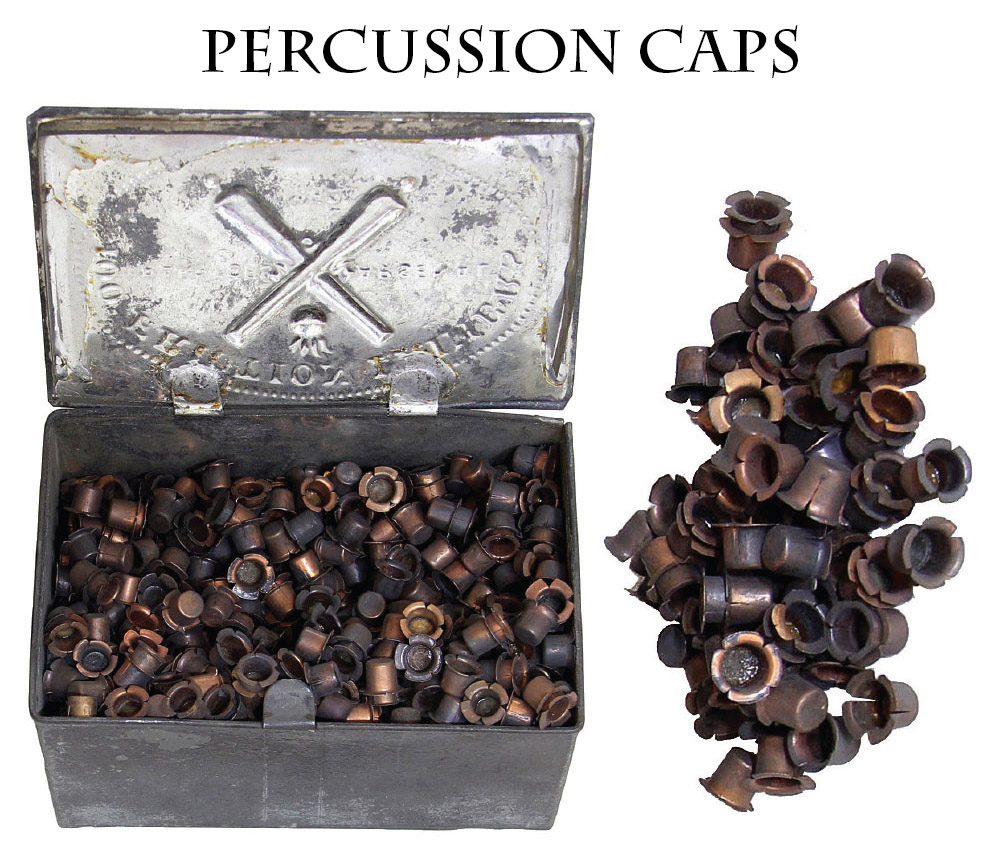
15-04-127 … Friction Primer Tin [Tin not for sale] and Percussion Caps …
I just purchased this neat old relic and am offering the percussion caps inside the tin in this offering. This very scarce tin came just as you see it, filled with percussion caps for muskets. The tin itself is the arsenal tin used to hold artillery friction primers. These are darned hard to find! I can only think of one instance where I found one still in a primer pouch! The tin has a hinged cover with small latch and embossed top reading: 100 FRICTION PRIMERS in an arc over an ordnance insignia, and FRANKFORD ARSENAL on either side. I don t know who put the percussion caps in the tin, it was certainly a handy storage idea, but since they do not belong together, I am splitting up the lot.
In each package of ten cartridges the soldier got 12 caps. While the supply lasts I will sell the percussion caps …
One Dozen … … … $15
Two Dozen … … … $25
Five dozen … … … $50
Click Here to E-mail Us!
Call us @ 419-842-1863
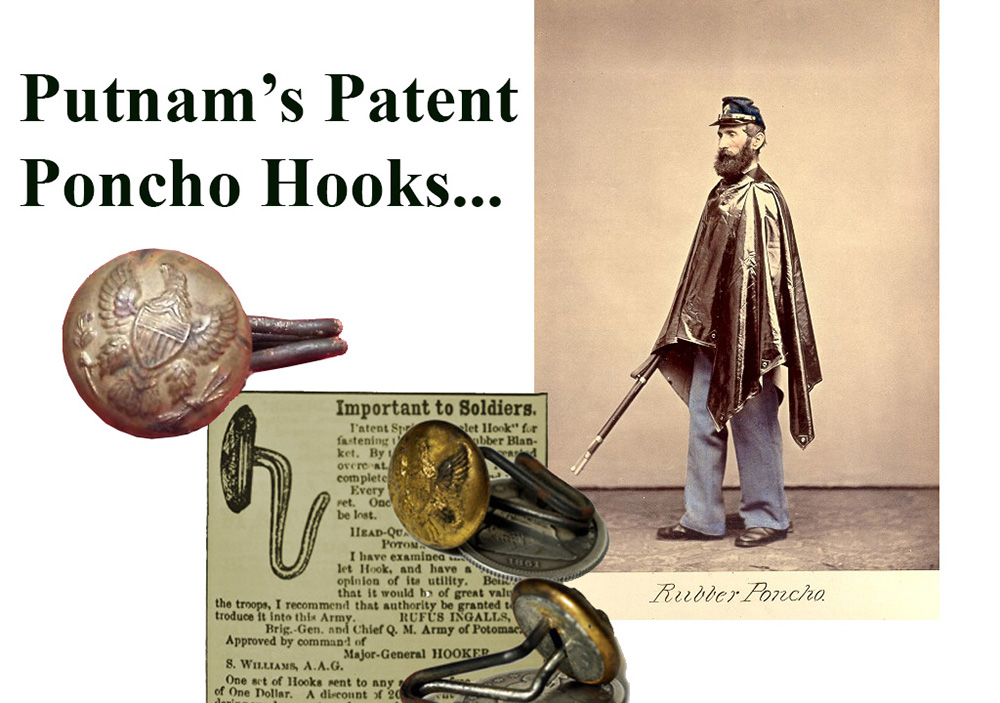
15-04-128 … These buttons were patented in 1862 by Abel Putnam
and made with a long spring shank and were designed to go through the grommets on issue rubber blankets so the sides could be connect ed and the whole thing worn as a poncho in rainy weather.The face is a standard Union Army eagle button. The back is a spring hook fashioned from double spring steel wire. I have very few priced each at
… $45.00
Click Here to E-mail Us!
Call us @ 419-842-1863
Layaways are Welcome
Need to split your order into multiple payments? No problem! A simple 20% earnest money deposit will hold your item for you.-acf
You can then pay it off in easy installments that fit your budget.
Read Terms Here
Items to Sell? Contact Us
I am always interested in buying ANYTHING from the American Civil War… Guns, Swords, Civil War Muskets, Knives, Uniforms, Flags, Medals, Badges, Diaries, Letters, Autographs, Buttons, photographs, tintypes, daguerreotypes, Insignia, Camp Items, Battlefield Relics, canteens, Drums, Etc… Call 419-842-1863 and ask for Dave Taylor.

